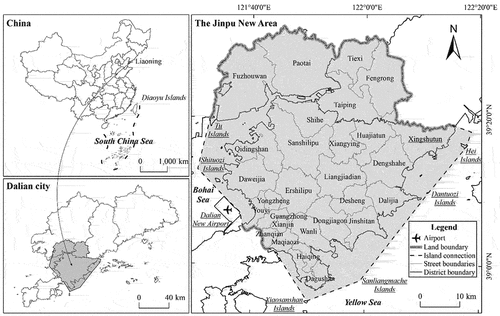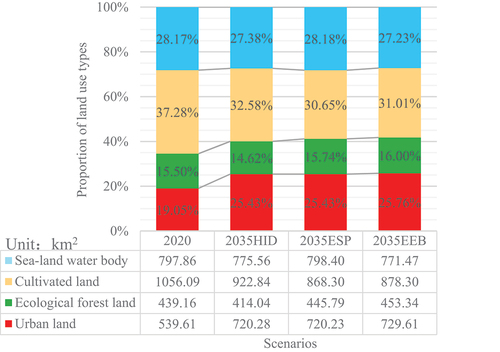Figures & data
Table 1. Data source and description
Figure 4. Land use classification in 2000, 2010, and 2020 under traditional and OICL perspectives (2010 coastline as reference boundary).
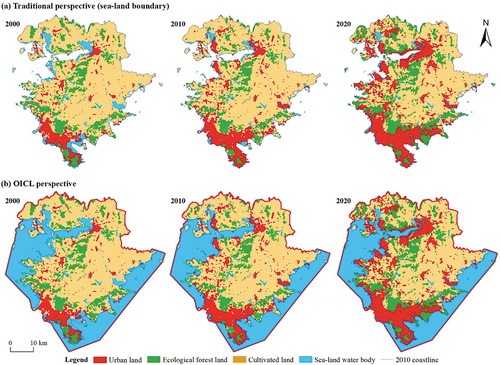
Table 2. Land use classification
Figure 5. Spatial distribution of eight influencing factors under traditional and OICL perspectives (see for the meanings of the labels and units).

Figure 6. Boxplots of eight influencing factors under traditional and OICL perspectives (see for the meaning of the labels).
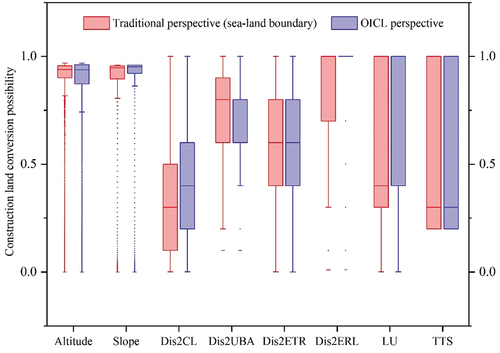
Table 3. Description of influencing factors
Table 4. Classification accuracy evaluation
Figure 9. The 2035 land use patterns and the composition of new urban land under HID, ESP, and EEB scenarios.
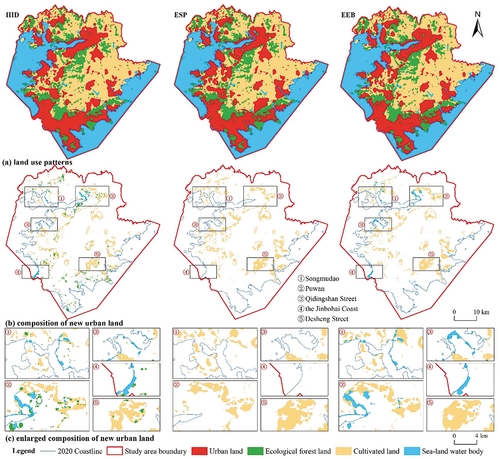
Table 5. Comparison of landscape pattern index of each scenario


